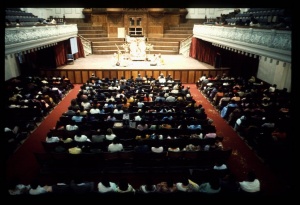CC Adi 12.20 (1975): Difference between revisions
(Vanibot #0027: CCMirror - Mirror CC's 1996 edition to form a basis for 1975) |
(Vanibot #0020: VersionCompareLinker - added a link to the Version Compare feature) |
||
| Line 2: | Line 2: | ||
<div style="float:left">'''[[Sri Caitanya-caritamrta (1975)|Śrī Caitanya-caritāmṛta (1975)]] - [[CC Adi (1975)|Ādi-līlā]] - [[CC Adi 12 (1975)|Chapter 12: The Expansions of Advaita Acārya and Gadādhara Paṇḍita]]'''</div> | <div style="float:left">'''[[Sri Caitanya-caritamrta (1975)|Śrī Caitanya-caritāmṛta (1975)]] - [[CC Adi (1975)|Ādi-līlā]] - [[CC Adi 12 (1975)|Chapter 12: The Expansions of Advaita Acārya and Gadādhara Paṇḍita]]'''</div> | ||
<div style="float:right">[[File:Go-previous.png|link=CC Adi 12.19 (1975)|Ādi-līlā 12.19]] '''[[CC Adi 12.19 (1975)|Ādi-līlā 12.19]] - [[CC Adi 12.21 (1975)|Ādi-līlā 12.21]]''' [[File:Go-next.png|link=CC Adi 12.21 (1975)|Ādi-līlā 12.21]]</div> | <div style="float:right">[[File:Go-previous.png|link=CC Adi 12.19 (1975)|Ādi-līlā 12.19]] '''[[CC Adi 12.19 (1975)|Ādi-līlā 12.19]] - [[CC Adi 12.21 (1975)|Ādi-līlā 12.21]]''' [[File:Go-next.png|link=CC Adi 12.21 (1975)|Ādi-līlā 12.21]]</div> | ||
{{CompareVersions|CC|Adi 12.20|CC 1975|CC 1996}} | |||
{{RandomImage}} | {{RandomImage}} | ||
==== TEXT 20 ==== | ==== TEXT 20 ==== | ||
| Line 18: | Line 17: | ||
<div class="synonyms"> | <div class="synonyms"> | ||
guṇḍicā-mandire—in the Guṇḍicā-mandira in Jagannātha Purī; mahāprabhura—of Lord Caitanya Mahāprabhu; sammukhe—in front; kīrtane—in saṅkīrtana; nartana—dancing; kare—does; baḍa—very | guṇḍicā-mandire—in the Guṇḍicā-mandira in Jagannātha Purī; mahāprabhura—of Lord Caitanya Mahāprabhu; sammukhe—in front; kīrtane—in saṅkīrtana; nartana—dancing; kare—does; baḍa—very; prema-sukhe—in transcendental bliss. | ||
</div> | </div> | ||
| Line 32: | Line 31: | ||
<div class="purport"> | <div class="purport"> | ||
The Guṇḍicā-mandira is situated in Jagannātha Purī, and every year Jagannātha, Balabhadra and Subhadrā come there from the Jagannātha temple to stay for eight days. When Lord Caitanya Mahāprabhu lived at Jagannātha Purī, every year He personally cleansed this temple with His principal devotees. The Guṇḍicā-mārjana chapter of Caitanya-caritāmṛta ( | The Guṇḍicā-mandira is situated in Jagannātha Purī, and every year Jagannātha, Balabhadra and Subhadrā come there from the Jagannātha temple to stay for eight days. When Lord Caitanya Mahāprabhu lived at Jagannātha Purī, every year He personally cleansed this temple with His principal devotees. The Guṇḍicā-mārjana chapter of Caitanya-caritāmṛta (Madhya 12) describes this vividly. | ||
</div> | </div> | ||
Latest revision as of 14:40, 26 January 2020

A.C. Bhaktivedanta Swami Prabhupada
TEXT 20
- guṇḍicā-mandire mahāprabhura sammukhe
- kīrtane nartana kare baḍa prema-sukhe
SYNONYMS
guṇḍicā-mandire—in the Guṇḍicā-mandira in Jagannātha Purī; mahāprabhura—of Lord Caitanya Mahāprabhu; sammukhe—in front; kīrtane—in saṅkīrtana; nartana—dancing; kare—does; baḍa—very; prema-sukhe—in transcendental bliss.
TRANSLATION
When Lord Caitanya personally cleansed the Guṇḍicā-mandira in Jagannātha Purī, Gopāla danced in front of the Lord with great love and happiness.
PURPORT
The Guṇḍicā-mandira is situated in Jagannātha Purī, and every year Jagannātha, Balabhadra and Subhadrā come there from the Jagannātha temple to stay for eight days. When Lord Caitanya Mahāprabhu lived at Jagannātha Purī, every year He personally cleansed this temple with His principal devotees. The Guṇḍicā-mārjana chapter of Caitanya-caritāmṛta (Madhya 12) describes this vividly.